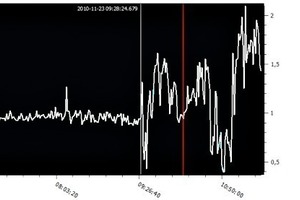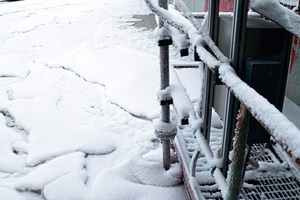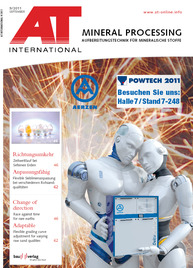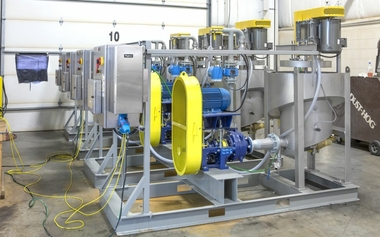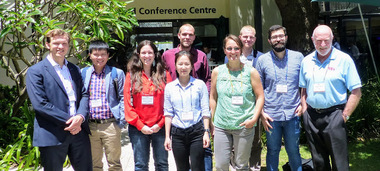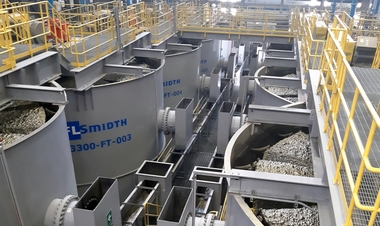New imaging technology increases the efficiency of flotation processes in concentration plants
It is now possible to use measurement devices based on impedance tomography to create real-time 3D images from inside the pipelines and tanks used by the processing industries. One significant application for this technology, spearheaded by the Finnish company Numcore Oy, is concentration plants in the mining industry.
The technology opens up entirely new possibilities to control flotation processes, an important component in the concentration process of minerals. In simplified terms, the principle of flotation is to blow bubbles of air into a mixture of ore, water and chemicals, whereby the mineral particles cling onto the bubbles. Mineral-carrying froth is generated as the bubbles rise up to the surface and are collected from there.
“Problems emerge if the froth cannot carry the load of mineral particles or the process otherwise becomes disturbed. The froth bed then disappears, and restarting the process wastes valuable time,” says Jukka Hakola, Numcore’s Vice President of Sales and Marketing.
With Numcore measurement devices, the size and quantity of air bubbles and the solid matter content of the froth bed can be monitored by means of electric conductivity distribution.
“If the solid matter content and bubble size in the froth bed changes, and solid matter starts to gather under the froth, this can cause the froth to become rigid or to collapse. When this situation can be predicted, the problem can be solved by changing the operating parameters.
Real-time characteristics are a key functionality in this technology; in other words, the system continuously provides the operator with factual data on what is happening in the flotation cells, for example the location of minerals and the bottom surface of the froth bed (Fig.).
“Because it has not been possible to look inside tanks, controlling a mineral concentration process has largely been based on experience-derived know-how. Now that operators can ‘look’ inside the process, it is possible for them to maintain an optimal mix all the time,” says Hakola.
According to Hakola, measuring as such does not create added value, rather the results should be used to control the operation. Therefore Numcore has, in close co-operation with a few key customers, developed measurement technology to better serve every-day work.
The company’s close partners include Outotec, a global supplier of mineral processing and metallurgical plants, and especially in the initial phase, the Geological Survey of Finland’s Outokumpu Mineral Processing Laboratory.
“At the moment, our sensors are in use at two concentration plants, where we have been able to see in practice which parameters need to be controlled and how we can really numerically prove the benefits that can be achieved for the customer. Our goal is to intervene in any upcoming problems at such an early stage that the process can go on without disturbances.
Numcore measurement technology is currently in test use at Inmet Pyhäsalmi Mine Oy’s copper and zinc mine at Pyhäsalmi, among others. According to Seppo Lähteenmäki, Processing Mill Manager, the system has provided accurate information on the condition of the froth bed, and the technology has functioned reliably.
“We have tested the device for a few months, and it has provided clear benefits for those operators who have received operator training for it and actively monitored the data provided by the system. The device appears to be so useful, in fact, that we are seriously considering buying it after the test period,” he says.
Depending on the diameter of the pipeline or tank, Numcore measurement devices are realised either as a flow-through sensor or as a probe-type sensor for installation inside large pipelines or tanks.
By supplying a weak alternating current to the electrodes of the sensor, it is possible to measure conductivity differences between the phases, for example for liquids, inside pipelines and tanks, as different substances show different conductivity values. The actual image is created by means of inverse calculation, however, and this is where Numcore’s core know-how lies.
“Our CoreApus flow-through sensor lends itself for analysing material flows inside pipelines of less than one metre in diameter. Because processing tanks are generally larger than this, we have developed the probe-type CoreHydra sensor which can analyse a larger area of the tank. With several sensors, one can even analyse a large tank or cell,” says Hakola.
Both sensor types can accurately measure interfaces between liquids and solids, but CoreApus is also applicable for imaging rapidly flowing liquids for example in pulp and paper mills.
“The biggest difference compared to previous systems is that now you can analyse why and how something is happening in the process, and how you can prevent an event if necessary. We focused on making the system easy to use to enable real-time and on-site corrective measures rather than relying on, say, laboratory samples.”

